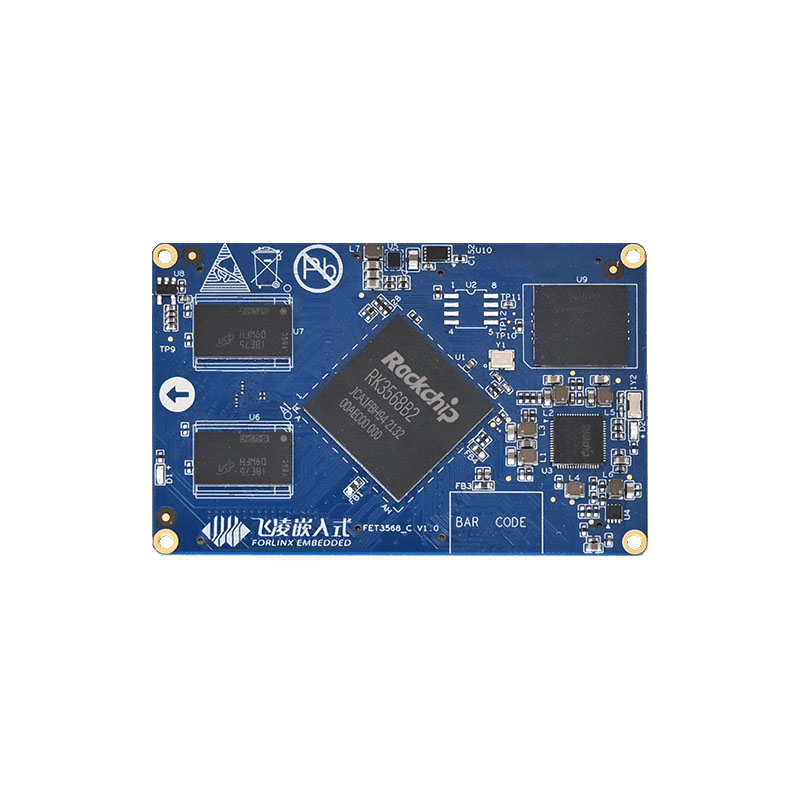
Fast Pesticide Residue Detection Solution Based on Forlinx FET3568-C SoM
Fast Pesticide Residue Detector: Efficient and convenient device for rapid analysis of pesticide residue in fruits and vegetables. It accurately measures pesticide residue in agricultural products, ensuring food safety and dietary health. It is widely used in industrial and commercial administration, vegetable wholesale markets, supermarkets, shopping malls and other fields.
Hardware Technology Implementation Features
- High Sensitivity and Accuracy: The detector employs advanced detection technology, capable of detecting very low concentrations of pesticide residues, ensuring precise and sensitive test results.
- Fast Detection and High Throughput: Utilizing advanced electronic and optoelectronic systems, the pesticide residue detector provides quick and accurate test results, enhancing detection efficiency. Some models also handle large sample volumes, further enhancing their high-throughput detection advantage.
- Automation and User-friendliness: It uses automated control technology to perform testing processes such as sample introduction, detection, and cleaning automatically, reducing manual operation time and errors. User-Friendly Interface: Its intuitive design simplifies operation, requiring minimal specialized skills.
- Versatility and Wide Applicability: In addition to pesticide residue detection, some pesticide residue analyzers also offer multiple detection methods to meet various pesticide testing needs. This makes the instrument valuable across various fields such as agricultural product quality and food safety.
With food safety concerns increasingly prominent, pesticide residue detection has become a crucial step in ensuring food quality and safety. Traditional pesticide analyzers are often limited by processing capabilities and power consumption, hindering rapid and accurate detection demands. Forlinx Embedded recommends the FET3568-C SoM as the solution.
FET3568-C is a high-performance, low-power processor, particularly suitable for embedded devices and IoT applications. In pesticide residue analyzers, the FET3568-C platform provides robust support for efficient operation with its outstanding computational power and power management capabilities.
- With powerful computing power. The powerful CPU cores can process large volumes of data to finish the pesticide residue detection and analysis within a short time. This is crucial for scenarios requiring real-time detection and output of results, effectively enhancing detection efficiency.
- Excellent power consumption control In the pesticide residue analyzer, low power consumption means extended battery life, which is crucial for users who need to conduct long-term detection in fields or laboratories. Additionally, low power consumption helps reduce device heat generation, thereby enhancing device stability and reliability.
- Rich peripheral interfaces such as UART, SPI, I2C, etc., facilitate communication with various sensors and external devices. In the pesticide residue analyzer, these interfaces can connect key components such as photodetectors and sensors, enabling rapid data acquisition and transmission. Additionally, the RK3568 supports various storage media, making it convenient for users to save and export test data.
- In addition to hardware performance improvements, the FET3568-C also enables software optimization for pesticide residue analyzers. Based on the powerful computing capabilities of RK3568, the analyzer can run more complex algorithms and models, thereby improving detection accuracy and precision. Additionally, the RK3568 supports various operating systems and programming environments, providing developers with flexible development options.
Rockchip's RK3568 significantly enhances the performance and reliability of pesticide residue analyzers. Its powerful computing capabilities, excellent power management, and rich peripheral interfaces enable pesticide residue analyzers to better meet the demands for rapid and accurate detection, providing robust technical support for food safety.



